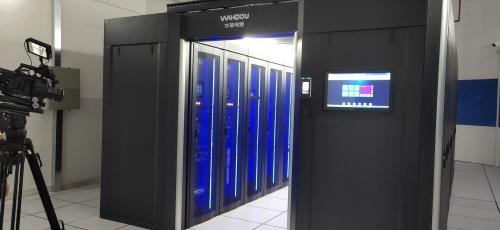Explanation of power supply terms related to UPS power supply 2
Current crest factor (CF): The current crest factor refers to the ratio of the peak value to the rms value of the current cycle waveform. Since the energy absorbed by the computer load when it receives the sine wave voltage is not necessarily sinusoidal, it will generate a higher peak current (between 2.4-2.6 times the current), so the UPS should be designed to provide a CF value greater than 3. current to meet computerized load applications.
Batteries in series/parallel: multiple batteries with the same performance and capacity are connected in series according to a certain polarity to form a battery pack; multiple batteries or battery packs with the same voltage are connected at the ends of the same polarity to form a parallel output. for parallel connection.
Battery management system: used to protect the UPS battery and prolong its life to achieve high-quality charging effect. The battery management system includes software and hardware, including battery characteristic determination, automatic selection of charging mode, automatic alarm, and charging of special batteries.

Short circuit: refers to the direct connection between the DC positive and negative poles of the circuit or the AC live wire and the zero and ground wires. A short circuit will cause severe overload and generate a large short-circuit current, which may burn the equipment or even cause a fire.
Ground wire, neutral wire and live wire: The ground is a good conductor, and the ground wire is short-circuited to the ground through a deeply buried electrode. The transmission of mains is in a three-phase way, and there is a neutral line. When the three-phase balance is in place, the current of the neutral line is zero, commonly known as "neutral line". The electrical input is shorted and the voltage difference is close to zero. The three phase wires of three-phase electricity and the neutral wire have a voltage of 220, which will cause electric shock to people, commonly known as "fire wire". There are strict standards for the installation and arrangement of electrical circuits. In practice, the correct assembly of the ground wire, neutral wire and live wire according to the standard is very important to safety.
Electromagnetic compatibility (EMC): The general term for radiated and conducted waves of equipment.
Rated safety low voltage (SafetyExtraLowVoltageSELV): IEC regulations stipulate the limit of rated safety voltage of electrical equipment. In this regulation, it is stated that the high voltage or the AC power supply part must be isolated with great care, or make it difficult for personnel to access to ensure the safety of personnel.
Crest factor (CF): The so-called CF refers to the ratio of the peak value to the effective value of the periodic waveform. Since the computer load receives a sine wave voltage will generate CF (current between 2.4-2.6 times), therefore, the UPS design often needs to be able to provide a CF value of 3 to meet the application of computer loads.
Discharge tube: It is a high-voltage protection element used at the input end of the equipment. If the voltage at both ends is higher than the protection specification value, there will be a short circuit inside, and the input overvoltage will be absorbed.
Radiated wave (EMR): This is a space electromagnetic wave, which exists in communication equipment or computer operating equipment. Some of the wave sources are radiated into space through the equipment's lines or *electrical antennas. In some cases, it may be due to The amplitude wave is too large, resulting in the interruption of electrical transmission or the failure of computer operating equipment.
Floating and equalizing: Both floating and equalizing are battery charging modes.
1. The working principle of float charging: when the battery is fully charged, the charger will not stop charging, and will still provide a constant float voltage and a small float current to supply the battery, because once the charger stops charging, the battery will naturally release electricity , so use the floating charge method to balance this natural discharge, and small UPS usually use the floating charge mode.
2. The working principle of equalizing charge: the battery is charged with a constant current and a fixed time, and the charging is faster. The charging mode that is often used by professional maintenance personnel when maintaining batteries, this mode is also conducive to activating the chemical characteristics of the battery.
Note: The intelligent charger has the function of automatically switching between floating and equalizing according to the working state of the battery, which can give full play to the advantages of floating and equalizing to achieve fast charging and prolong battery life.
Load regulation rate: the voltage regulation accuracy of the output when the load changes.
Overload: The UPS has a specified load capacity, and if the load exceeds the rated load, it is overloaded.
Overload protection: self-protection when the load is overloaded.
Overvoltage protection: When the input or output voltage exceeds the safe range, the UPS automatically disconnects the input or protects the output.
Overheating protection: The power components that are most likely to generate heat in the UPS are equipped with temperature sensing devices. When the UPS is overheated, the UPS will be shut down or switched to bypass.
